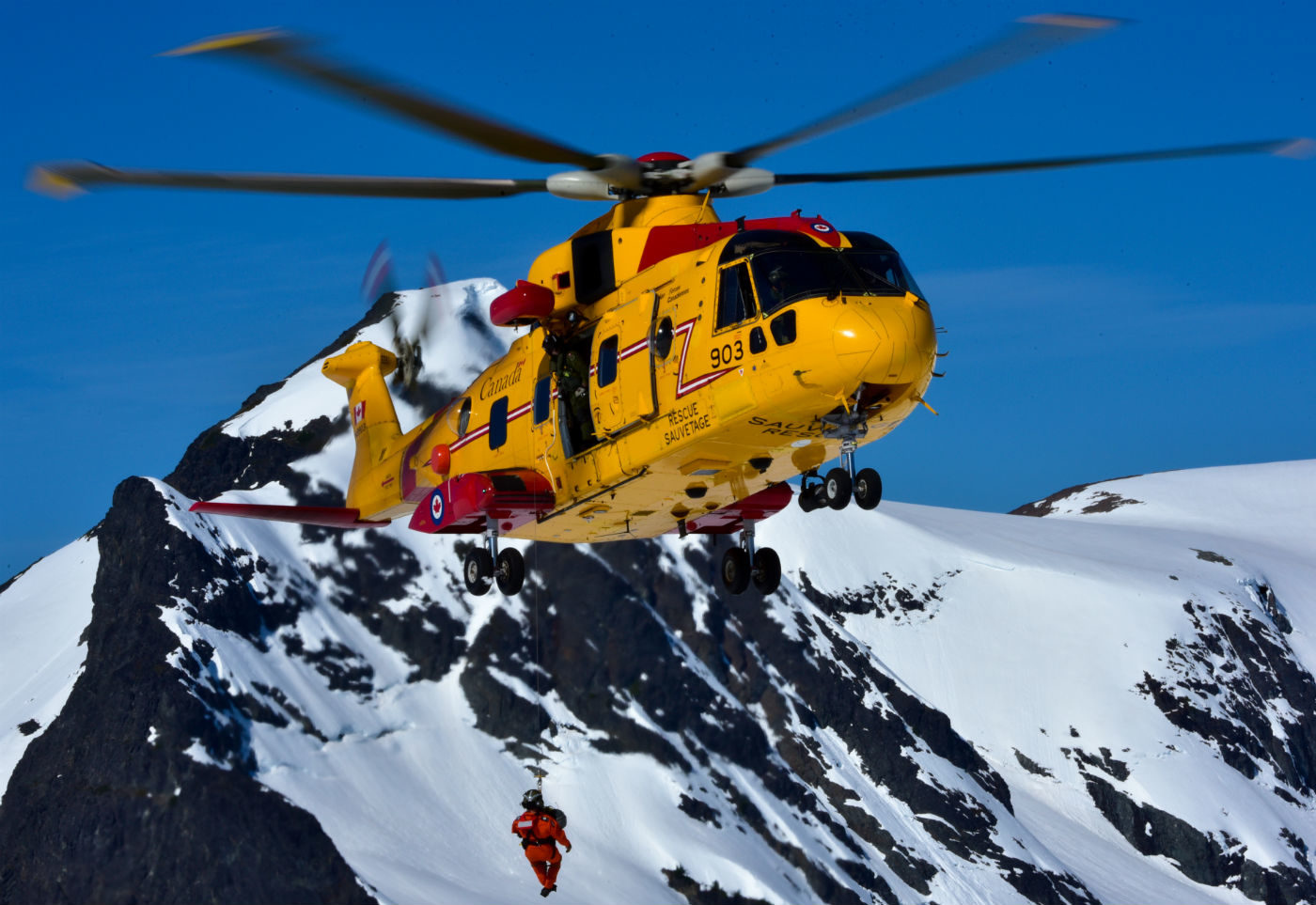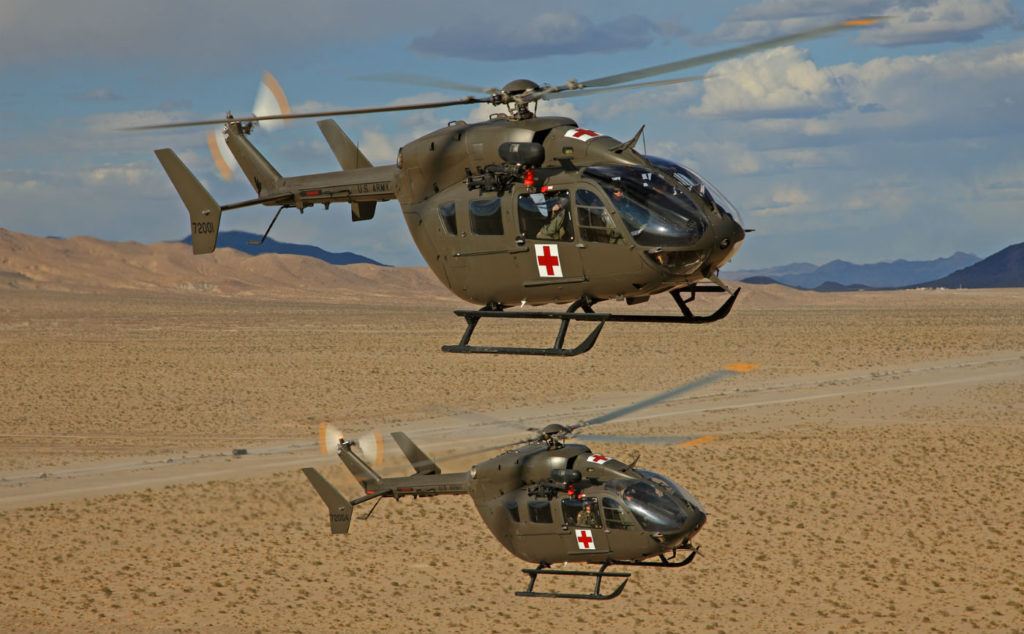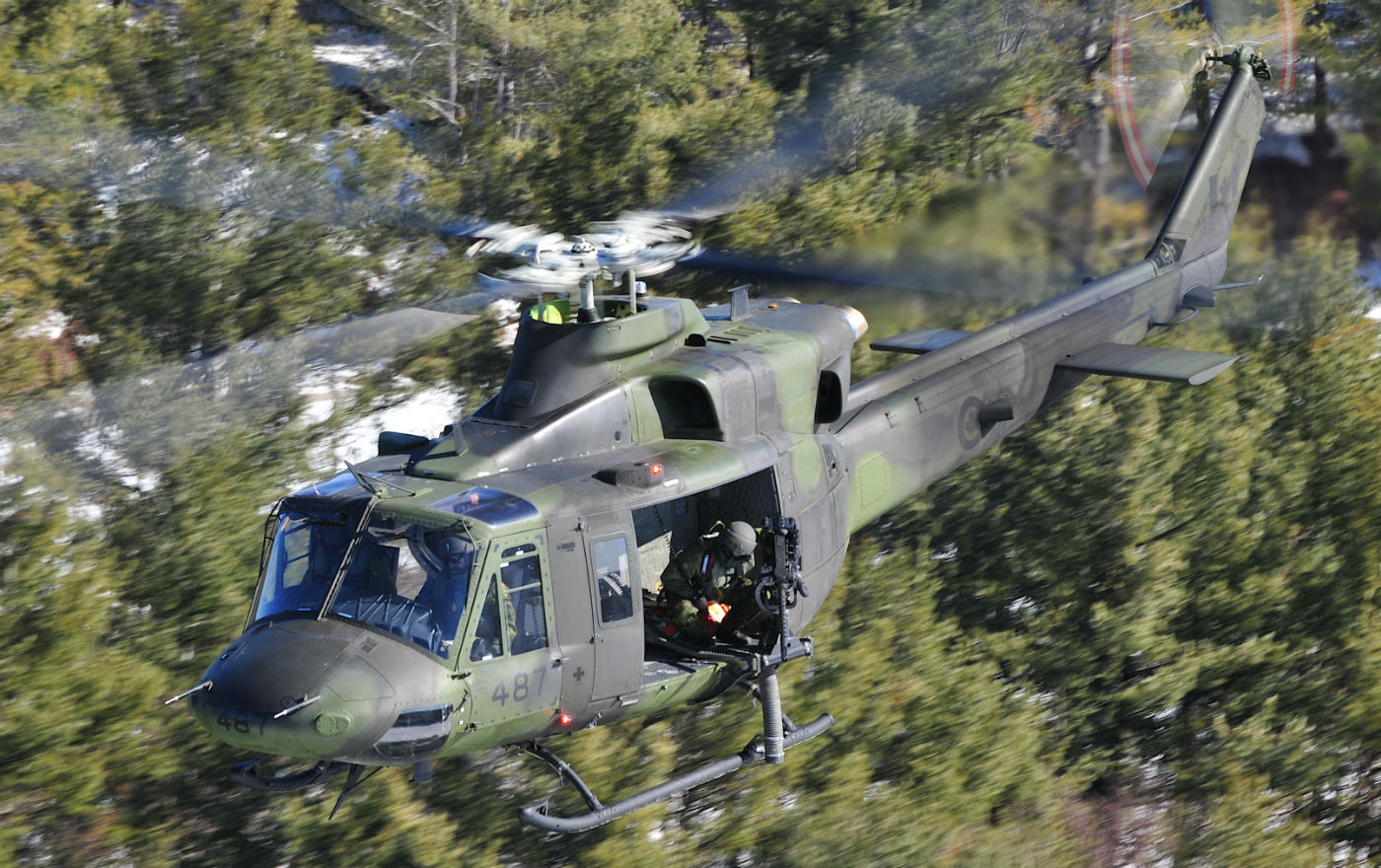Estimated reading time 9 minutes, 17 seconds.
In the weeks before Canada’s largest defence and security tradeshow, the Minister of National Defence and a Senate committee gave military helicopter manufacturers, many of whom have seen a sales slump in recent years, reason for optimism.

Midlife upgrade programs for both the CH-146 Griffon transport and tactical helicopter and the CH-149 Cormorant search and rescue helicopter have been on the Royal Canadian Air Force (RCAF) project list for several years, but neither have had funding approved to launch into project definition.
In an address on May 3 foreshadowing this week’s defence policy review announcement, Minister Harjit Sajjan described the dismal state of military spending and flagged both helicopters as part of a growing list of unfunded equipment and technical capabilities urgently required for the armed forces to meet domestic and international operational demands.
A week later the Senate Standing Committee on National Security and Defence also raised both helicopter projects in a report outlining a plan to reinvest in the military, recommending a Griffon replacement program be prioritized and that the government move forward with a proposal to expand the Cormorant fleet by upgrading the 14 CH-149 aircraft and converting seven VH-71 airframes currently in storage to the same operational capability.
While the RCAF has outlined a limited life-extension project for the CH-146 that would upgrade avionics and some communications systems, it has also assessed whether it might be better to invest in a new platform, bringing the tactical aviation capability on par with the CH-147F Chinook.
The prospect of a new helicopter acquisition program was clearly welcomed by Airbus Defence & Space. Romain Trapp, president of Airbus Helicopters in Canada, led off the company’s corporate press briefing at CANSEC on June 1, highlighting the capability of the H145M as an option for the Griffon replacement.
With the rapid introduction of new technologies in its aircraft, Trapp said Airbus’ eventual offering would depend on when a request for proposals is issued. But the company has been pushing for an accelerated program, he said, and has provided the RCAF with recent a white paper and customer analysis as well as cost projections.

“We made the business case by showing [the Air Force] that simply by going to a new platform, the Canadian taxpayers would save more than $1 billion 10 years from now,” he said.
“Today our current proposal is the H145M, which is a proven platform,” he added, noting that the multirole aircraft is “ideally suited for the Canadian tactical reconnaissance utility helicopter requirements.”
The U.S. Army ordered the UH-72A Lakota, a variant of the H145M, in 2006 as its light utility helicopter and currently operates a fleet of 400. The aircraft is also in service with German special forces, possibly a key consideration in a Canadian procurement given that 427 Special Operations Aviation Squadron also operates the Griffon.
“All deliveries were done on time, on budget, on quality,” said Trapp.
Airbus is now investing heavily in autonomous flight technologies and will soon develop “fully autonomous versions of some of our helicopters,” he added. “This will allow us to respond to the emerging needs of our defence customers all over the world.”
For Leonardo Helicopters (formerly AgustaWestland), increased activity around a Cormorant midlife upgrade program was reason enough to put the band back together. Days before CANSEC, the company announced the reassembly of Team Cormorant, the industry partnership of Leonardo, IMP Aerospace, CAE, Rockwell Collins Canada and GE Canada that delivered the CH-149 in 2000.
Team Cormorant is proposing a modernization project based on the Norwegian All-Weather Search and Rescue Helicopter (NAWSARH) program, which selected the AW101 in 2013 to replace its fleet of Sea King aircraft and is expecting delivery of the first helicopter later this year. The CH-149 is a variant of the AW101 medium-lift helicopter now in service with over a dozen militaries.
The team is also proposing to expand the Cormorant fleet from 14 to 21 aircraft by converting seven VH-71 airframes, airworthy variants of the AW101, that were acquired from the U.S. government in 2011 for spare parts, to the same configuration. The additional aircraft would allow the air force to return the Cormorant to 424 Transport and Rescue Squadron at 8 Wing Trenton, Ont., which currently operates a fleet of Griffon helicopters.
Leonardo has argued that, with an average of over 5,000 hours on the airframes, all of which are around 16 years of age, and growing concerns about parts obsolescence, an immediate update is required if the RCAF wants to meet its service life target of 2040.
The upgrades would include new cockpit displays, avionics, digital automatic flight control system, aircraft management system, electro-optical surveillance system, and weather radar as well as a new 3,000 horsepower CT7-8E engine.
Leonardo is also offering a new Obstacle Proximity LiDAR System that would provide directional audio and visual warning when the helicopter blades get too close to obstacles, and mobile phone detection technology that would effectively turn the aircraft into a mobile phone cell and allow its onboard system to identify and track a mobile phone within a 25-mile range.

The Cormorant fleet had problems with availability in the early years of the program, but John Ponsonby, managing director of Leonardo Helicopters, said “dispatch availability is over 98 per cent with the current fleet. We continue to support IMP and we provide the level of support expected by the customer.”
The Air Force has been supportive of the VH-71 conversion proposal but RCAF commander LGen Mike Hood told Skies in an interview last November that repair and maintenance costs of the extant fleet would need to be reduced before the air force could move ahead with the plan.
“I believe once we get there, the conditions will be set for me to drive forward with a Cormorant midlife update and I want to see the VH-71s included in that,” he said. “But until such time as they can deliver on what the department has asked in the way of reducing cost, I’m a little stuck.”
Ponsonby acknowledged the issue and said large strides have been made in recent years to reduce the cost of ownership. “We have committed to a significant program of cost reduction and we have delivered a significant percentage of cost reduction already…we are focused on providing best value, we are taking action, and that action is delivering results.”
As part of its options analysis, the Air Force had considered the possibility of replacing the CH-149, but an upgrade program now appears to be the preferred option. Ponsonby believes it’s the correct decision.
“Our argument is that we can insert the capabilities you are looking for, and the reliability and cost of ownership are reduced,” he said. “You have used this platform for 18 years, it has done absolutely great service, there is nothing better on the market, so a [midlife upgrade] does make sense.”








